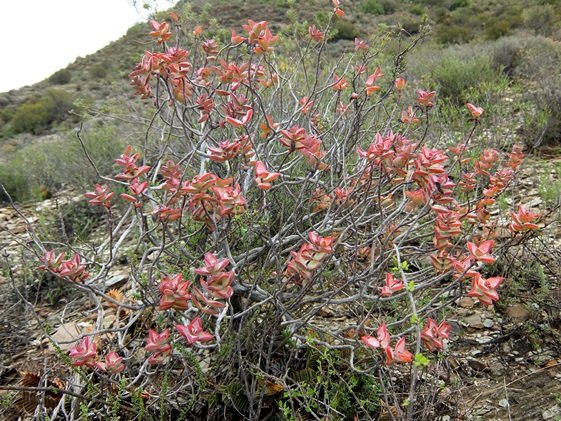Crassula rupestris on its last legs

When a Crassula rupestris plant enters its weakened, latter part of old age, the bare, woody stems are long and pale grey where old leaves have dropped off over the years. The rate of losing leaves, as reflected in the length of leafy stem sections, is determined by growth conditions during each particular season. Still, these impoverished stem-tips are erect or nearly so in most cases. One has one’s pride in spite of everything!
The long stems are rarely straight in big parts, each meander representing the forgotten leafy tip section of a particular yesteryear. Branching appears to have happened less in recent times. The short, leaf-covered upper stem-sections, although as colourful as in the plant’s heyday, have by now enough continual challenge in shaping new leaves amidst the losing of old ones for bothering with ambitious undertakings such as branching.
Whatever grew sheltered in this plant’s shade in years gone by, now has to fend for itself. Dappled sunlight has progressed to almost full sun, the undergrowth increased in size and variety, ready to step up (Frandsen, 2017; Smith, et al, 2017; Vlok and Schutte-Vlok, 2015).

